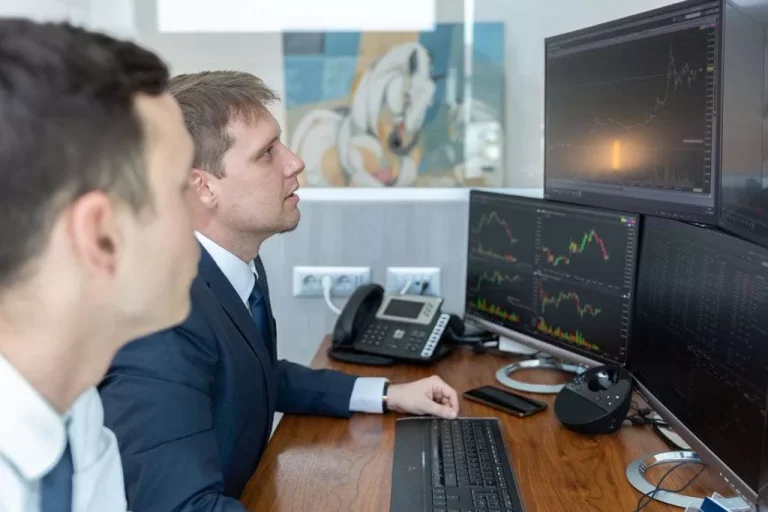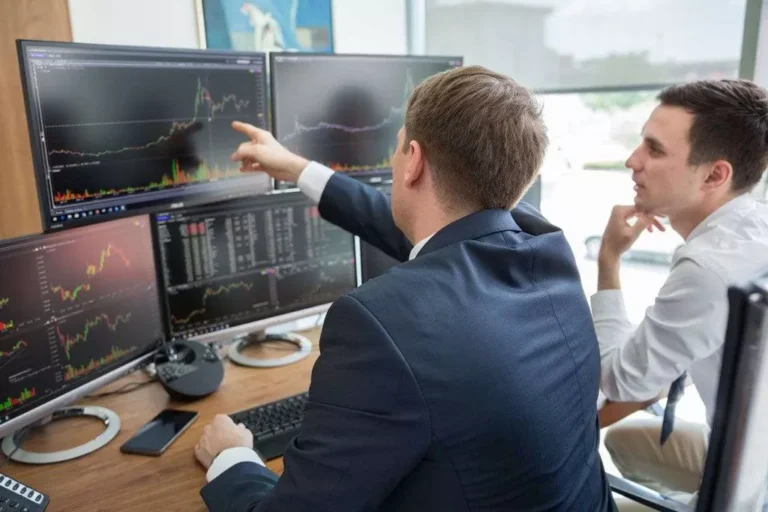We’re ready to share our newest considering, however industry rules require you to register or sign in to proceed studying this text. For illustrative functions only and never meant to be a recommendation to take any explicit funding motion. All data is from SSGA except otherwise noted and has been obtained from sources believed to be dependable, but its accuracy just isn’t assured. There is not any representation or guarantee as to the present accuracy, reliability or completeness of, nor legal responsibility for, choices based on such information and it shouldn’t be relied on as such.

The difference between the very best worth a buyer is keen to pay for an asset and the lowest value the seller will settle for to sell. Bid-ask spreads are a key measure of the liquidity of an asset or safety. Brokers and sellers execute trades on behalf of purchasers by routing orders to trading venues or by matching patrons and sellers instantly. They charge commissions for his or her companies to execute and settle trades. Factors corresponding to fund measurement, market making, fund sponsor status, and the expense ratio can affect an ETF’s liquidity profile. Explore Coca-Cola’s 2025 inventory forecast, highlighting the company’s enduring attraction in investment portfolios and skilled insights on future efficiency.
Secondary market liquidity is decided primarily by the volume of ETF shares traded. In our final blog, we mentioned liquidity and outlined it as a measure of market participants’ capability to trade what they need, when they need, at a mutually agreed upon worth for a selected quantity. We defined why liquidity is important to threat management and capital growth. We additionally addressed the factors that contribute to a liquid market, including a high number of members, a high traded quantity, and a relatively balanced and deep order guide. Investor, you ought to buy shares in U.S.-listed firms from the U.K., however because of native and European laws, you’re not allowed to purchase U.S.-listed exchange-traded funds (ETFs) within the U.K.
Creation When Shares Trade At A Premium
APs, which can create and redeem ETF shares, discover this demand spike. An AP assembles a basket of the underlying clean tech stocks that GreenTech ETF tracks and exchanges it with the ETF issuer for brand new shares of GreenTech ETF. These new shares are then launched available in the market, rising the availability to meet the burgeoning demand.

PTFs accomplish that by successfully processing market data from many public sources and effectively deploying their capital. As we talked about last week, intermediaries are critical to offering liquidity as a outcome of they join patrons and sellers across time and allow supply to satisfy demand in a well timed fashion. Liquidity providers can be on both aspect of a transaction, as purchaser or vendor. By entering and holding positions they bridge the gap between market participants. Often, buyers look at common every day volume (ADV) of an ETF as a foundation for liquidity. ETF liquidity is how easily shares could be bought or sold with out impacting the worth.
“an Investment In Information Pays The Most Effective Interest” Benjamin Franklin
But, there are U.K.-based ETFs that monitor U.S. markets, so long as it has the ‚UCITS‘ moniker in the name. ETFs are unique vehicles which might be easily accessible asset allocation instruments for traders. Although straightforward to access, only a small fraction of ETF liquidity is available by way of the exchanges, and crucial takeaway for traders is knowing how to access the total pool of liquidity an ETF offers.
An ETF can have good liquidity even with decrease trading volumes due to the creation and redemption mechanisms. If creations and redemptions are easily facilitated, the actual buying and selling quantity within the ETF might not matter as much. Alternatively, even when an ETF has a excessive buying and selling volume and a lot of interest, however the underlying shares are illiquid, APs might find participating in creations and redemptions troublesome. In essence, the liquidity of the underlying holdings of an ETF directly impacts the ETF’s liquidity. A well-structured ETF with liquid underlying assets can higher adapt to market demand modifications, preserving truthful prices and an efficient investor trading expertise. When traders want to promote their GreenTech ETF shares, a fluid redemption process supported by the liquidity of the underlying holdings helps be positive that the surplus provide of ETF shares is efficiently absorbed.
An ETF provider creates an ETF primarily based on a specific methodology and sells shares of that fund to investors. The provider buys and sells the constituent securities of the ETF’s portfolio. While traders do not personal the underlying belongings, they may nonetheless be eligible for dividend payments, reinvestments, and other benefits. The first is “on‑screen” liquidity, which buyers and market individuals can see and supply (also known as the ETF secondary market).
Collective Funding Trusts (cits)
Authorized participants that are unable to buy the elements can not efficiently create ETFs, while illiquid costs of the elements may make redeeming the ETFs much less engaging. After all, liquidity dangers have to be discounted in any illiquid security’s valuation due to slippage. The objective of those transactions is to create liquidity in the primary market and ensure that the ETF’s value very intently displays the value of its underlying property (via arbitrage opportunities). For instance, if the value of an ETF became cheaper than the sum of its components, the authorized participant could redeem the ETF and promote the components at a profit. Low ranges of liquidity on this market could create premiums and discounts to the ETF’s web asset value.
- Frequent trading of ETFs might significantly enhance commissions and different costs such that they might offset any financial savings from low fees or prices.
- Liquidity Providers brings higher worth stability to the markets and enable brokerages to fund their trades to help in the buying and selling of the securities with larger volumes.
- Because ETFs have become increasingly popular with buyers, there are heaps of obtainable.
- Less liquid property might take longer to sell or require accepting a discounted price.
- Secondary market liquidity, reflected by the bid-ask unfold and buying and selling volume on buying and selling platforms, solely signifies the liquidity within the secondary market.
- An index ETF is constructed in much the identical means and can maintain the stocks of an index, monitoring it.
The first ETF was the SPDR S&P 500 ETF (SPY), which tracks the S&P 500 Index. Passive management and the creation/redemption course of can help minimize capital positive aspects distributions. Create-to-lend desks create ETF shares (through an AP) for the aim of lending them to shoppers seeking to borrow the shares. While ETFs are usually liquidity providers listed on one change, buying and selling of ETF shares happens throughout many buying and selling venues. These embrace national securities exchanges (e.g., NYSE, Nasdaq and CBOE), alternative buying and selling systems (ATSs or “dark pools”), and over the counter.
However, there are some further expenses to remember when investing in an ETF. The secondary market’s liquidity, by contrast, is the diploma to which the ETFs themselves commerce on inventory exchanges without affecting the market value. Conversely, authorized individuals can redeem ETF shares in giant increments in trade for the underlying securities, or cash, within the acceptable weightings and quantities. The views and information discussed on this report are as of the date of publication, are topic to vary and will not replicate current views.

Unlike mutual funds, ETFs could be sold quick, bought on margin and infrequently have choices chains hooked up to them. Typically, liquidity is greater during the market’s opening and shutting, generally known as the market’s “rush hours,” because of higher trading volumes. During off-peak hours, for example, around lunchtime, liquidity might diminish, probably leading to wider bid-ask spreads and less favorable costs for buyers. While a narrower bid-ask unfold incessantly suggests better liquidity, a wider unfold isn’t all the time an indication of poor liquidity. The unfold can be influenced by the liquidity of the underlying assets and the effectivity of the market-making course of.
Understanding Exchange-traded Funds (etfs)
Unlike ETFs, which are traded on exchanges like stocks, mutual fund shares are bought and bought immediately with the fund on the day’s closing NAV. The real-time buying and selling feature of ETFs supplies intraday liquidity, permitting buyers to execute trades all through the buying and selling day. Alternatively, mutual funds provide end-of-day liquidity, with all orders processed at the closing NAV. This basic distinction makes the liquidity experience between ETFs and mutual funds distinct, catering to completely different investor preferences and techniques. Liquidity is certainly one of the most necessary options of exchange-traded funds (ETFs), though frequently misunderstood.

The “secondary market” liquidity seen on exchanges is essential for ETF investors and merchants. However, in contrast to stocks, ETFs possess another layer of liquidity issues due to how they are created. In most circumstances, making a particular account to put cash into ETFs is pointless. One of the primary attracts of ETFs is that they’re more liquid as a result of they are often traded all through the day and with the pliability of shares.
In change for ETF shares, the quick vendor supplies collateral, typically required to be larger in value than the borrowed shares. A major market that supports the ETF’s liquidity and permits https://www.xcritical.com/ them to trade close to Net Asset Value (NAV) all through the day. The profiles of those two related ETFs can lead to completely different relative ranges of liquidity.
He is a CFA charterholder as well as holding FINRA Series 7, 55 & sixty three licenses. He currently researches and teaches economic sociology and the social studies of finance at the Hebrew University in Jerusalem. The NFT (Non-Fungible Token) market has been experiencing a tremendous surge in popularity in 2022, with artists from varied backgrounds embracing this new type of digital art. Currently, it’s estimated that there are over 10,000 active wallets engaged in NFT transactions every day, with over 6,000 distinctive patrons concerned. In today’s fast-paced world of technology, there may be one phenomenon that is capturing world consideration – Artificial Intelligence (AI). With its ever-growing capabilities and potential, AI is quickly changing into a driving force in various industries, from healthcare to finance, transportation, and more.
This helps hold the worth of GreenTech ETF in verify, guaranteeing its worth is intently aligned with the NAV. Suppose a agency named GreenTech ETF tracks the clear technology sector. One day, a breakthrough invention in solar energy creates waves of excitement out there. Investors move to purchase shares of GreenTech ETF to capitalize on this pattern. The sudden surge in demand might drive the share value of the ETF sky-high, deviating from the precise worth of the underlying property or its NAV. On a high degree, liquidity within the major market is tied to the worth of the ETFs‘ underlying securities, whereas in secondary market it’s associated to the value of the ETF shares traded.